A generation ago, Sacramento was the undisputed king of commerce and culture in our region. But the once-quiet suburbs are growing up fast. In fact, thanks to years of quiet community building, the edge cities are leading the way in defining the modern Capital Region.
Among these are Roseville, Folsom, Elk Grove and Rancho Cordova, where residents and leaders have been laying the groundwork for decades to turn their communities into full-amenity locales with distinct identities — complete cities where newcomers can buy a good house, land a good job, shop, dine, recreate and, importantly, experience a sense of community.
To be clear, central Sacramento is hardly dead. It has the Golden 1 Center, the state Capitol, chic new housing and night spots, and growth potential of its own in the downtown railyard.
But it’s equally clear, in the new post-COVID-19 work-from-home era, there is no longer a single dominant employment and cultural center in the Sacramento region. Here’s Comstock’s look at four notable cities and how they are changing the face of the region.
Dynamic Elk Grove is putting itself on the map as a go-to Northern California city
“Elk Grove can step up and do big things. We’ve been working
toward this. People know where Elk Grove is now. We deserve our
place on the map.” – Mayor Bobbie Singh-Allen

More than two decades after this former bedroom community incorporated, Elk Grove is on a roll. The fast-growing city’s latest success: It just signed a partnership deal with the Sacramento Zoological Society to build a sprawling regional zoo in town, an attraction expected to bring more than $14 million in visitor spending per year.
It is the kind of transformative deal that smaller cities like Elk Grove once stood by and watched the city of Sacramento make. Elk Grove Mayor Bobbie Singh-Allen says the zoo deal is one of several amenities that signal Elk Grove has arrived as a full-fledged city.
“Elk Grove can step up and do big things,” Singh-Allen tells Comstock’s. “We’ve been working toward this. People know where Elk Grove is now. We deserve our place on the map.”
An influx of Bay Area emigres have discovered Elk Grove, attracted by good schools, fresh new housing, ample shopping and a panoply of recreational amenities, such as bike trails and sports complexes. Elk Grove has become one of the region’s most ethnically diverse cities. That’s not by chance. Mayor Singh-Allen says people of different ethnicities have told her the word is out that Elk Grove is welcoming and appreciative of diversity.
The south county city has become more creative in the types of neighborhood settings it hopes to offer and recently signed a letter of intent with a developer on an urban-style mix of apartments, offices, high-end retail and a hotel on a city-owned 20 acres adjacent to the city’s community center, aquatic center and park.
Brownstone townhomes are coming in. So are unique local eateries and watering holes. That includes Slow & Low Smokehouse, owned by a local group with restaurants in central Sacramento. Other emblematic new businesses include the Sky River Casino, which turned a previously unfinished shopping mall into a regional attraction, and Texas-based Kubota Tractor Corporation, which is investing $70 million in a distribution center, bringing 100 jobs to town.
That gives more Elk Grove residents opportunities to work locally, avoiding long commutes. City Manager Jason Behrmann says it’s part of the plan: “It’s not by accident. Elk Grove incorporated to control its destiny. We’re realizing the fruit of that dedication.”
Traffic congestion remains an issue. The city and regional partners are working on an arterial link between Highway 99 and Interstate 5, and the city is laying plans with Sacramento Regional Transit to extend light rail through town to the zoo site.
Rancho Cordova has achieved the holy grail: a strong jobs-and-housing balance
“We could build in a modern, innovative way and didn’t have to
follow the old broken models. It was very much can-do.” – Mayor
David Sander

Perhaps no city in the region has engineered a turnaround as impressive as Rancho Cordova. Hit hard in 1993 by the closure of Mather Air Force Base, residents incorporated in 2003 to take control of their future, starting right off with a “blight busters” program. It was a pivotal moment, Mayor David Sander says. “We could build in a modern, innovative way and didn’t have to follow the old broken models. It was very much can-do.”
Today, much of Rancho Cordova feels fresh and modern. With a cornucopia of new housing, and more to come, the city now draws higher-income residents, often young families. Many were attracted initially by lower home prices than in nearby cities. That’s no longer always the case. The new east area is one of the region’s wealthiest ZIP codes. Rancho’s first $1 million house sale just took place.
Perhaps the city’s greatest strength is that it boasts one of the best jobs-to-housing balances in the region. Rancho’s commercial, office and industrial areas comprise 3,500 businesses with a workforce of more than 65,000, second in the region to downtown Sacramento as a job center.
The “Your City” campaign is promoting community spirit, aided by the nonprofit Cordova Community Council, which puts on 100 mostly free events a year, including festivals, parades, music concerts and culturally diverse art exhibits. Rancho Cordova has a concert band and a symphony. The stately Mills Station building has been turned into an art and cultural center. Rancho even has a hip factor: A craft beer and spirits “Barrel District” has formed on the east side.
Rancho’s older section along the once-bustling Folsom Boulevard is in the midst of rejuvenation as well. The city has invested $42 million redoing the boulevard with bike lanes, landscaping, sidewalks and art. A 10-acre site at Mather Field Road is planned to become a pedestrian-oriented community gathering spot called Mills Crossing that will include housing, retail, arts, a theater, youth programs, and health and wellness facilities. Nearby, a planned “art experience” bridge over Highway 50 at Zinfandel Drive will carry pedestrians and cyclists between job centers on the south of the freeway and shopping on the north.
“Mills Crossing is about creating places for people to gather, bringing the whole community together,” City Manager Micah Runner says. “The Zinfandel bridge is connecting communities together, so that we in Rancho Cordova are one city. And we’re not done yet.”
In Roseville, a historic rail town invests in new technologies to fuel growth, modernization
“A city built on rails, trails and a commitment to renewal serves
as the foundation for a quality of life that is hard to find
anywhere else.” – Mayor Bruce Houdesheldt

International microchip giant Bosch recently went looking for a city in the United States in which to set up operations. No surprise: Bosch chose Roseville. Not only did Roseville have a plant available; the south Placer County city boasts an educated workforce and a reputation as a place that works well with businesses to help them succeed.
The Bosch deal “is the talk of the town,” Roseville Economic Development Director Melissa Anguiano says. But it’s just the latest success for a city that had the foresight decades ago to launch its own electric utility and its own water company to serve residents and businesses.
Mayor Bruce Houdesheldt says Roseville’s strength is that it values both history and renewal. “A city built on rails, trails and a commitment to renewal,” he said, “serves as the foundation for a quality of life that is hard to find anywhere else.”
Born in 1909 as a railroad town, Roseville has been one of the fastest-growing major cities in the Capital Region over the past quarter-century, offering jobs, good schools, a sense of safety, recreation opportunities, plentiful shopping and a solid tax base.
That boom has roots going back decades: In the late 1970s and early 1980s, the city lured tech giants Hewlett-Packard and NEC Electronics. Roseville scored another coup in 1989 with the opening of the Roseville Automall. Sutter Health arrived in 1993, and the Galleria shopping mall opened a few years later, bringing luxury retailers to the region, among them Tiffany & Co., Gucci and YSL.
Those businesses in turn created a climate for local businesses to shine. Local restaurant Nixtaco was recently among the first Sacramento-region restaurants to win a prestigious Michelin Bib Gourmand recognition, and Roseville’s old downtown has come alive with new entertainment sites.
Long popular among retirees, Roseville also has aggressively courted young families. Its youth sports facilities, including swimming, softball, volleyball and a new complex of 10 soccer fields, make Roseville a nationally known tournament city.
The city and south Placer still have issues to tackle. South county roads and freeways suffer from traffic congestion. But residents have shown a willingness to pitch in, City Manager Dominick Casey says. In 2018, voters approved a sales tax increase to help the city deal with service and infrastructure needs. “Once you are here,” Casey says, “no matter where you came from, you are a Rosevilleian.”
Gold Rush town of Folsom gets modern makeover but keeps its outdoorsy persona
“Yes, we are a Gold Rush town, but we’re also a technology hub
and a family-oriented community, and that is part of our identity
now.” – Mayor Mike Kozlowski

Folsom Mayor Mike Kozlowski says he hardly knows a person in town who isn’t into hiking, biking, boating or just getting their steps in on the city’s miles of meandering pathways, including the iconic Johnny Cash recreation and art trail.
The mayor’s point: If you’re an outdoorsy type, Folsom may well be your mecca. The city’s tagline, “Distinctive by Nature,” evokes the city’s foothills setting next to Folsom Lake, Lake Natoma and the American River.
While that athletic lifestyle adds to Folsom’s appeal, the historic Gold Rush town has emerged as one of the region’s dynamic cities thanks to an effort to bring in well-paying jobs coupled with civic amenities. That includes shopping and new entertainment venues as well as redevelopment of Historic Folsom, site of the summer Twilight Concert Series.
“We have tried to maintain a sense of uniqueness,” Kozlowski says, but also to be a modern city. “Yes, we are a Gold Rush town, but we’re also a technology hub and a family-oriented community, and that is part of our identity now.”
The city got a boost a generation ago when it landed an Intel technology campus. More tech companies followed. Health care companies as well. The city responded with hillside housing and new regional shopping and dining districts, notably Palladio. Folsom recently granted rights to build 10,000 housing units in master-planned communities south of Highway 50, making Folsom a growth city for decades to come.
Folsom residents, among the most educated high-income workers in the region, take in shows at Harris Center for the Arts and classes at Folsom Lake College. Families visit the distinctive Folsom City Zoo Sanctuary, which houses rescued animals.
Sacramento Regional Transit will soon upgrade light rail service to every 15 minutes at three local light rail stations, making it easy for residents to get downtown and to Sacramento State University.
Folsom now is pushing for a greater mix of housing styles and densities to allow more people to live all stages of their lives in town. “That’s the hidden benefit of communities where you can live, work and play with a mix of jobs and housing formats,” the mayor says. “The more you can do close to home, the less you drive, the better.”
Tony Bizjak, a longtime Sacramento resident, is a freelance journalist and former staff writer for the Sacramento Bee and San Francisco Chronicle, covering housing, development, local government and transportation, among other issues.
Recommended For You
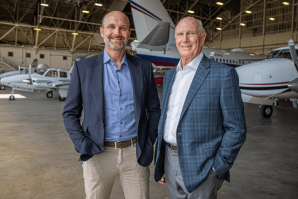
The Changemakers
The people who’ve shaped the Capital Region over the past decade
The Capital Region has seen a stunning metamorphosis over the past decade. These changes didn’t happen on their own; they occurred due to the work and vision of a range of notable people, from developers and public officials to sports executives and innovators.
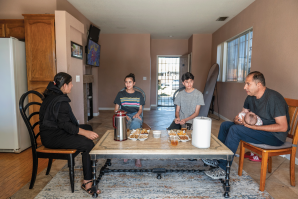
The Great Migration
From immigrants fleeing their countries to Bay Area residents escaping high prices, the culture of the Capital Region is changing
Just under 2.4 million people live in the Sacramento-Roseville-Folsom metropolitan area, an increase of roughly a quarter since the turn of the century.
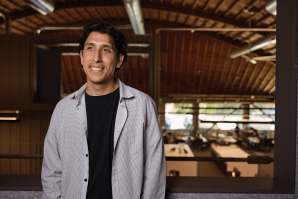
Building the Future
Veteran architects are essential in mentoring young, emerging designers
The field of architecture is changing, and technology is playing a central role, but it’s not the only element that’s shifting: so is the expectation of what young and emerging professionals are looking for in an architectural job.
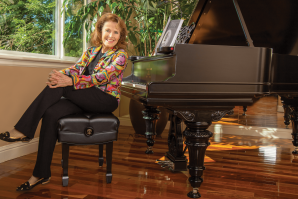
A Day in the Life of Comstock’s Publisher
Winnie Comstock-Carlson describes an average weekday as this magazine’s founder, president and publisher (for 35 years).
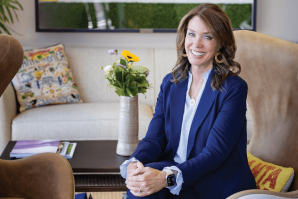
The Way We Work: Caroline Beteta
A glimpse into the daily life of the CEO of Visit California
On paper it’s a dream job of nonstop travel, but the reality is that most days she’s stuck in her office until 7 p.m. Thankfully she has a secret weapon: white space.



